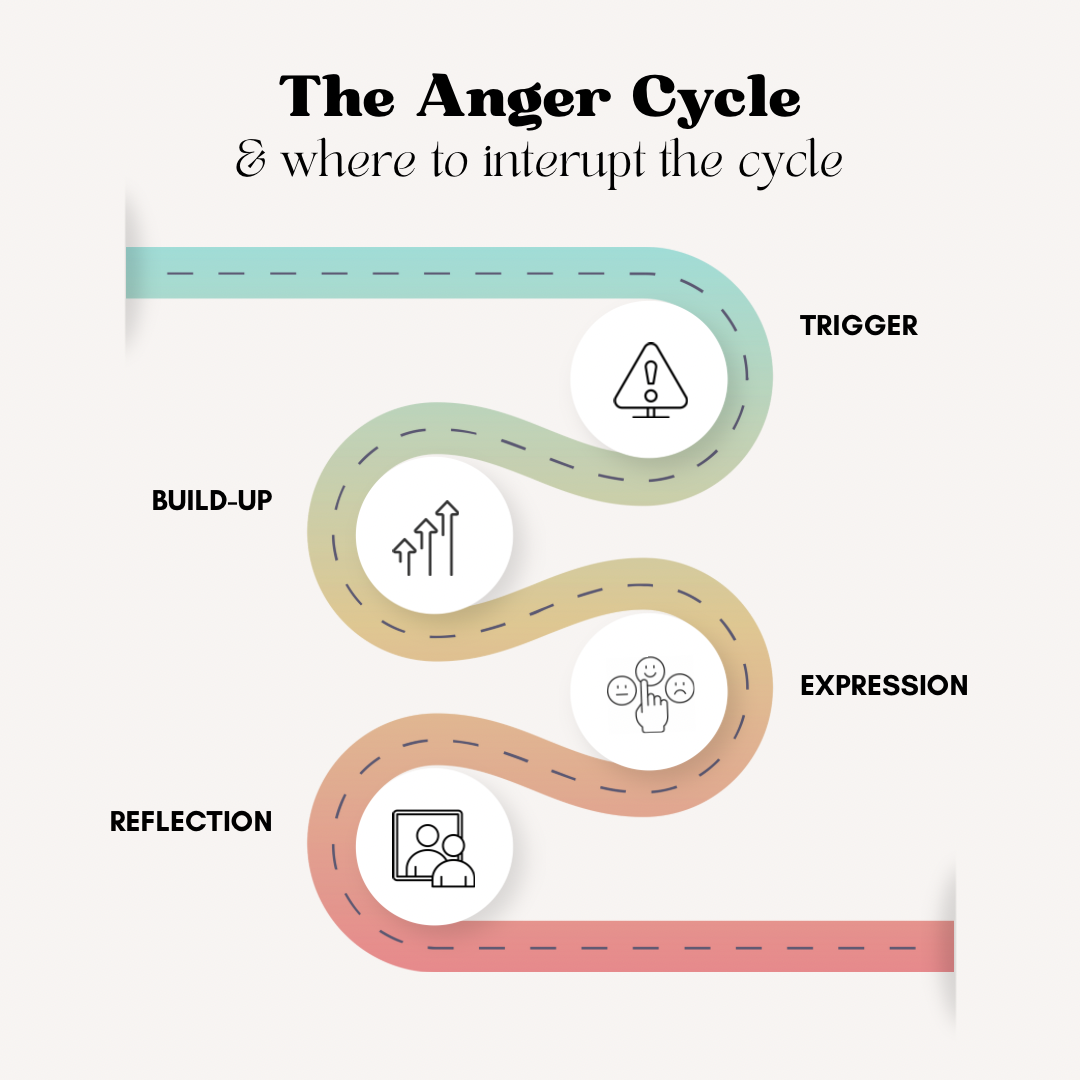Anger is a perfectly normal emotion, but when it piles up, it can feel like a pressure cooker ready to blow. Holding onto anger doesn’t just spoil your mood; it can affect your relationships, sleep, and even your health. The good news? You don’t need years of therapy to start letting go. Below are five simple, science-backed exercises you can try the next time you feel that simmering heat in your chest.
1. Progressive Muscle Relaxation (PMR)
What it is
Progressive Muscle Relaxation (PMR) involves tensing and then releasing each major muscle group in your body, one at a time. By focusing on the contrast between tension and relaxation, you can calm both body and mind¹.
How to do it
- Find a quiet spot and sit or lie down comfortably.
- Start at your feet: inhale, squeeze the muscles in your feet for 5–7 seconds.
- Exhale and suddenly release the tension, noticing the wave of relaxation.
- Move up: calves, thighs, glutes, abdomen, hands, arms, shoulders, neck, and finally your face.
- Pause between each group to feel the difference between tight and loose.
Spend about 10–15 minutes on a full PMR session. Even a 5-minute quick scan can dial down your internal temperature.
2. Box Breathing
What it is
Also known as four-square breathing, box breathing is a simple, structured technique used by everyone from Navy SEALs to stressed-out office workers. This rhythm of inhale-hold-exhale-hold helps regulate your nervous system².
How to do it
- Inhale slowly through your nose for a count of 4.
- Hold your breath for a count of 4.
- Exhale gently through your mouth for a count of 4.
- Hold again for 4.
- Repeat for 3–5 minutes, or until you feel calmer.
Pro tip: Picture drawing a square in your mind, tracing one side per count.

3. Physical Expression: Shadow Boxing or Pillow Punches
What it is
Sometimes anger needs an outlet that’s more physical than meditative. Shadow boxing or pillow punches let you transform that red-hot energy into movement without hurting anyone³.
How to do it
- Shadow boxing:
- Stand with feet hip-width apart.
- Raise your fists in front of your chin.
- Throw gentle jabs and crosses in the air. Imagine you’re punching stress away.
- Keep your core engaged and breathe out with each punch.
- Pillow punches:
- Grab a firm pillow or cushion.
- Bring it up to chest height and punch it with both fists in alternating rhythm.
- You can yell or grunt if it feels natural, just be mindful of your surroundings.
Aim for 1–2 minutes of continuous movement. You’ll get a mini cardio boost and release endorphins that lighten your mood⁴.
4. “Anger Dump” Journaling
What it is
Putting your thoughts on paper can be like draining a clogged pipe. Known as expressive writing, this method helps you process and externalize your anger².
How to do it
- Set a timer for 5–10 minutes.
- Write nonstop about whatever is making you angry. No censoring!
- Use vivid detail: Who, what, where, when, how.
- End with a reflection: What, if anything, can you learn from this? How might you respond differently next time?
Afterwards, you can shred or delete the page if you want. It’s about release, not saving a draft.
Read more about journaling here
5. Guided Imagery: Safe Place Visualization
What it is
Guided imagery engages your imagination to transport you to a calming “safe place.” It can interrupt angry thoughts and shift your brain toward relaxation⁵.
How to do it
- Close your eyes and take a few deep breaths.
- Imagine a place where you feel completely safe (beach, forest, cozy room etc).
- Engage your senses:
- Sight: What colors and shapes do you see?
- Sound: Are there waves, birds, a crackling fire?
- Touch: Feel the sand, breeze, or soft blanket.
- Smell: Salt air, pine needles, fresh coffee.
- Stay in that mental space for 2–3 minutes, noticing tension melt away.

If you like, record a short (1–2 minute) narration on your phone and play it back when you need a quick escape.
The Anger Cycle and How to Break It
Understanding anger isn’t just about managing outbursts, it’s about recognizing the cycle behind it. When you can spot where you are in that cycle, you gain the power to intervene before things spiral. Below is a simple breakdown of the typical anger cycle, plus which tools to apply at what time.
The Cycle Looks Like This:
Trigger → Build-Up → Expression → Reflection

Let’s walk through it:
🔴 Trigger
This is the moment something sets you off: a comment, a situation, a memory.
Example: Someone ignores your message.
Even small things can trigger a big response if they touch on deeper wounds like rejection or feeling invisible.
Try this: Notice your early signs. Do you tense your jaw? Hold your breath? Clench your fists?
Break the cycle here:
Take a deep breath. Even one calming breath can tell your brain, “We’re safe.” You’re hitting pause before the build-up starts. Box breathing might be helpful here. Progressive Muscle Relaxation (PMR) can help you relax your muscles. A safe visualization might get you out of that angry place.
🟠 Build-Up
Your body starts reacting. You might feel hot, tense, or overwhelmed. Thoughts race.
This is the part where adrenaline kicks in, and your brain is gearing up for fight-or-flight mode.
Try this: Do a quick body scan. Where is the tension sitting?
Break the cycle here:
Move your body! Shake out your hands, stretch your arms, or go for a 2-minute walk. These small movements help burn off the built-up energy before it explodes. Shadow boxing and pillow punching can help you move that anger.
🟡 Expression
This is where the anger comes out and how it comes out makes all the difference.
Unhealthy expressions might look like snapping at someone, slamming a door, or shutting down.
Healthy expressions involve naming what you feel, setting boundaries, or processing it privately first.
Try this: Before reacting, ask yourself: What do I really want to say? Will this help or harm?
Break the cycle here:
Grab a journal or open a note app. Dump everything that’s in your head, no censoring. This release without harm can be a total game changer.
🟢 Reflection
After the storm has passed, you’re left with the emotional aftermath. This is where healing and learning happen, if you give yourself space for it.
Ask yourself:
- What triggered me?
- Was it about this moment… or something deeper?
- What would I do differently next time?
Support this stage:
Be kind to yourself. You’re human. Anger is just energy
Putting It All Together
Everyone’s relationship with anger is unique. You may find one exercise works best, or you might combine several:
- Shadow Boxing when you’re at home alone.
- Journaling at night to process the day.
- Guided Imagery for a mid-day mental break.
The key is to practice. Over time, these tools become like emotional first aid. Quick, effective, and empowering.
When to Seek Help
If you notice that anger is affecting your health, relationships, or daily functioning, consider talking to a mental health professional. These exercises are great for everyday stress, but chronic or explosive anger may need deeper work.
Sources
- Jacobson, E. (1938). Progressive Relaxation. University of Chicago Press.
- American Psychological Association. (2021). Managing your anger.
- Mayo Clinic Staff. (2020). Anger management: 10 tips to tame your temper. Mayo Clinic.
- Hamer, M. (2007). The anti-stress diet: How to boost and balance your body’s natural hormones.
- Harvard Health Publishing. (2022). Relaxation techniques: Breath control helps quell errant stress response.
Disclaimer: I’m not a mental health professional, everything here is shared from research and personal experience. If you’re feeling overwhelmed or need support, please consider talking to a qualified professional. You’re not alone. If you’re in the U.S., you can call or text 988 anytime. For help in other countries, visit https://findahelpline.com.

